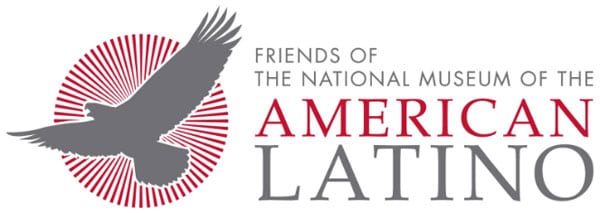
September 25, 2018; Washington Post
In 1994, a report from a Smithsonian-commissioned task force chaired by Raul Yzaguirre, executive director of the National Council of La Raza (now Unidos US) from 1974 to 2004, issued a report titled Willful Neglect: the Smithsonian Institution and US Latinos. At the time, the task force concluded that “the Institution almost entirely excludes and ignores [Latinxs] in nearly every aspect of its operations.”
The Smithsonian Latino Center was found in 1997 to respond to the shortfall and promote Latinx contributions to arts, culture, and science. The Center “has been praised for its exhibitions and research, as well as its mentoring programs,” notes Peggy McGlone in the Washington Post. This year, it won the Diversity, Equity, Accessibility and Inclusion award for institutions from the American Alliance of Museums. In granting its award, the museum trade association cited outreach efforts to Latinx scholars and students and acquisition of works by Latinx artists.
Curator Taína Caragol, who joined the Smithsonian’s National Portrait Gallery in 2013, tells McGlone that, “There has been a noticeable increase in representation. Latinx artists are showing up in every exhibition, in the permanent collection.…When I arrived here five years ago, the representation of [Latinx] people and artists was minimal. That has massively changed.”
But while Latinx representation in collections is much improved, in other areas the Smithsonian has fallen short. This is particularly true with respect to hiring, especially at the senior management level. Also, an envisioned National Museum of the American Latino remains on the drawing board more than two decades after it was proposed.
Sign up for our free newsletters
Subscribe to NPQ's newsletters to have our top stories delivered directly to your inbox.
By signing up, you agree to our privacy policy and terms of use, and to receive messages from NPQ and our partners.
As a report released last month from the Latino Policy & Politics Initiative and the Chicano Studies Research Center at the University of California, Los Angeles (UCLA), titled Invisible No More: An Evaluation of the Smithsonian Institution and Latino Representation, indicates, “Our findings reveal some notable progress in key areas impacting collections, exhibitions and scholarship. Here, the Smithsonian provides a much-needed model for other institutions. Yet, there remains significant work to do in diversifying leadership and governance.”
According to an update to the report issued last week based on new numbers provided by the Smithsonian, among senior leadership, in 2007, there were eight senior Latinx leaders out of 181 positions; by 2016, there were only five senior Latinx leaders out of 232 positions. Effectively, as a percentage, this works out to a 50 percent decline from 4.4 percent of all senior positions in 2007 to 2.2 percent in 2016. As for overall Smithsonian employment, the percentage of Latinx workers has declined slightly from 4.87 percent of employees in 2007 to 4.82 percent of employees in 2016, even as the Latinx percentage of the US population increased rapidly during the same period from 10.3 percent to 17.8 percent.
Meanwhile, progress on creating a museum that focuses on the Latinx experience in the US is at best halting. “Originally proposed during the design phase of the National Museum of the American Indian, the [Latinx] effort was squeezed out by the National Museum of African American History and Culture, which was authorized by Congress in 2003,” writes McGlone.
McGlone adds that Smithsonian Secretary David Skorton has said that his focus is on maintaining existing buildings. A 2016 report, writes McGlone, “found its maintenance backlog to be at least $785 million. And once the African American Museum opened, Smithsonian leaders turned their attention to the National Air and Space Museum and its seven-year, $1-billion renovation.”
A nonprofit advocacy group called Friends of the American Latino Museum is promoting legislation by Congress similar to the 2003 legislation that led to the 2016 opening of the National Museum of African American History and Culture. That museum, since its opening, has hosted over 3.5 million visitors and has had to use tiered entry passes to govern visits due to the overwhelming public demand.
As the Smithsonian indicates, Congress must pass legislation to create a new museum. In the meantime, McGlone indicates that, “The Smithsonian will follow the model of the African American Museum by opening a permanent space for [Latinx] exhibitions in the National Museum of American History.” However, even that, McGlone cautions, remains “years away.”—Steve Dubb











